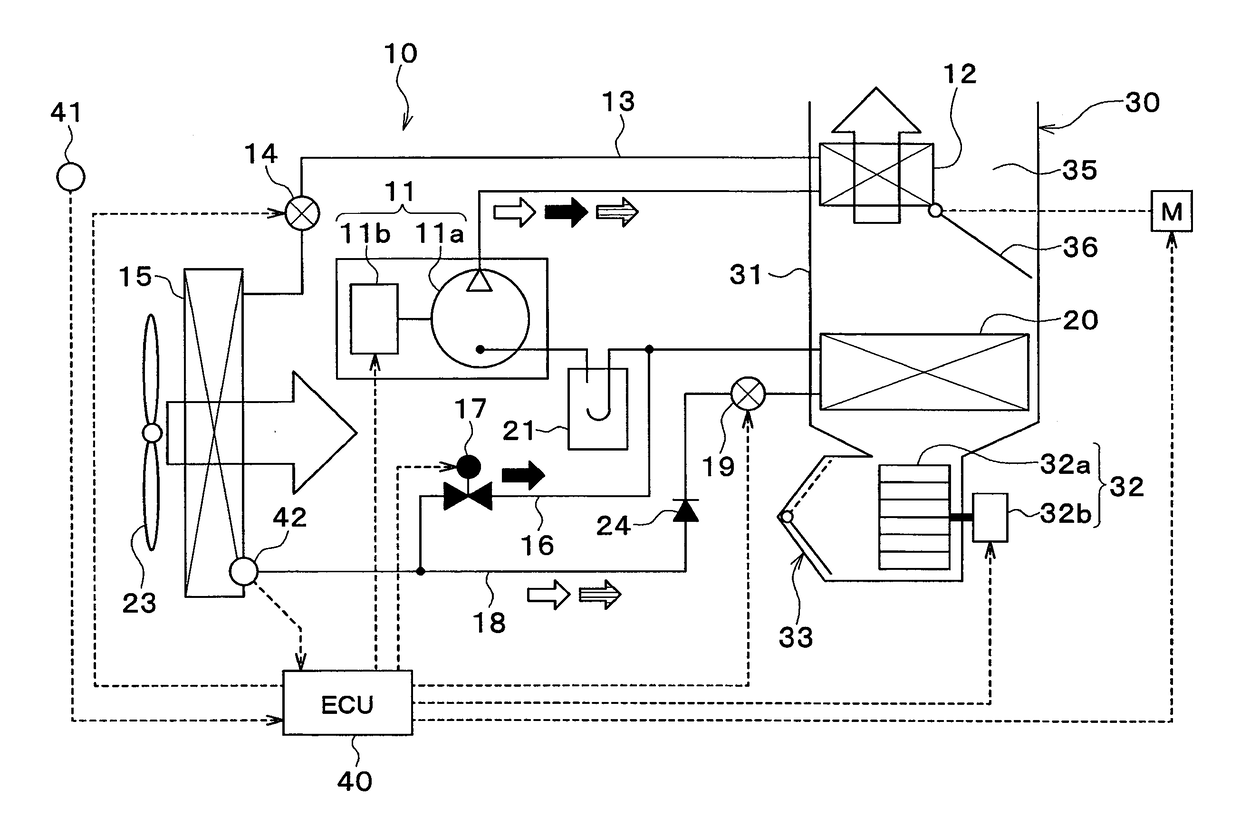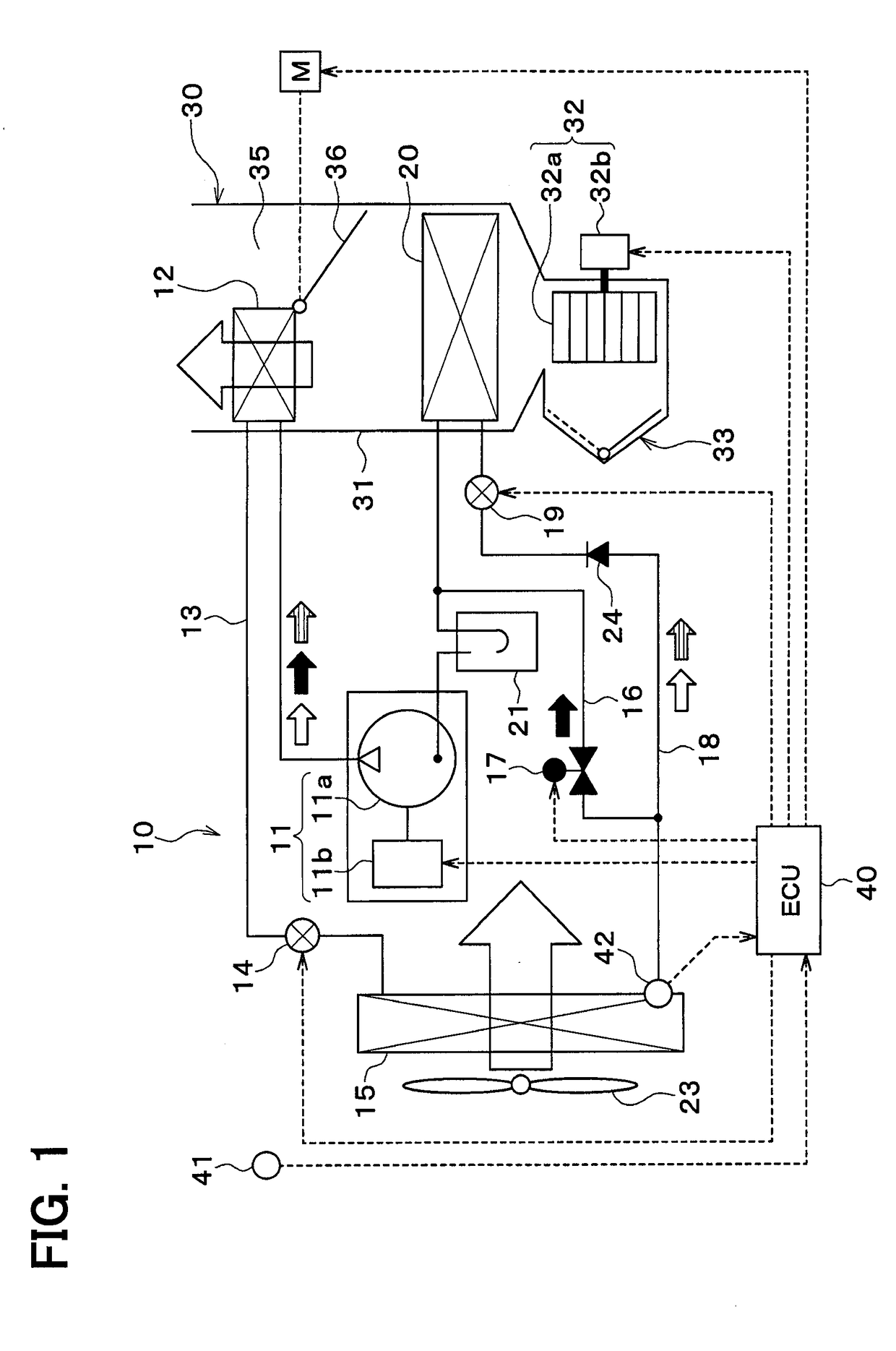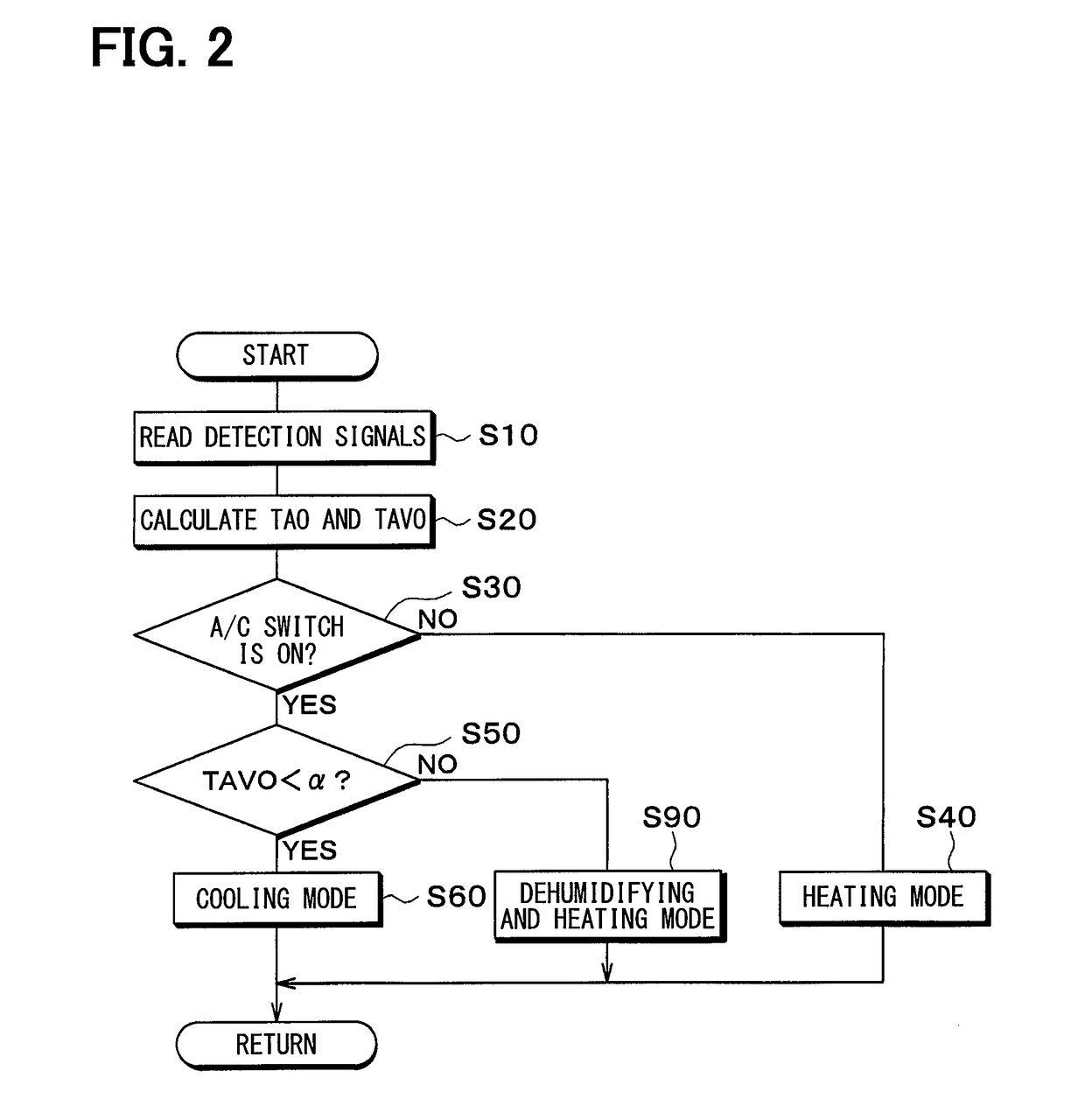Air conditioning device for vehicle
a technology for air conditioning devices and vehicles, which is applied in the direction of compression machines, lighting and heating apparatus, and heating types, etc. it can solve the problems of degrading the coefficient of performance of a heat pump cycle, increasing the opening degree of the expansion valve to delay, and reducing the heat absorbed by the heat absorber. , the effect of reducing the amount of heat absorbed by the heat absorber
- Summary
- Abstract
- Description
- Claims
- Application Information
AI Technical Summary
Benefits of technology
Problems solved by technology
Method used
Image
Examples
first embodiment
[0027]An air conditioning device 1 for a vehicle shown in FIG. 1 is an air conditioning device that air conditions an inside of a vehicle compartment. The air conditioning device 1 for the vehicle is mounted to a hybrid vehicle. The hybrid vehicle is a vehicle that obtains drive force for traveling of the vehicle from an engine and an electric motor for traveling.
[0028]The air conditioning device 1 for the vehicle has a refrigeration cycle device 10. The refrigeration cycle device 10 cools or heats air to be blown into the vehicle compartment.
[0029]The refrigeration cycle device 10 can switch between a refrigerant flow path for a cooling mode, a refrigeration flow path for a dehumidification heating mode, and a refrigeration flow path for a heating mode.
[0030]In the cooling mode, a cooling operation for cooling the inside of the vehicle compartment is performed. In the dehumidification heating mode, a dehumidification heating operation for heating while dehumidifying the inside of t...
second embodiment
[0156]In the first embodiment, the high-pressure refrigerant discharged from the compressor 11 dissipates heat into the air in the interior condenser 12. In the present embodiment, as shown in FIG. 10, high-pressure refrigerant discharged from a compressor 11 dissipates heat into heat medium in a refrigerant-heat medium heat exchanger 25 and the heat medium to which the heat is dissipated in the refrigerant-heat medium heat exchanger 25 dissipates heat into air in a heater core 34. For example, the heat medium is ethylene glycol antifreeze which is what is called LLC.
[0157]The refrigerant-heat medium heat exchanger 25 and the heater core 34 are radiators that dissipate heat of the refrigerant discharged from the compressor 11, thereby heating the air by utilizing the heat dissipated from the refrigerant. The heater core 34 is a heat medium-air heat exchanger that performs heat exchange between the heat medium and the air.
[0158]The heater core 34 is housed in a case 31 of the interio...
third embodiment
[0164]In the second embodiment, the air mix door 36 reduces the volume of the air passing through the heater core 34 to thereby delay the frost formation on the exterior heat exchanger 15 in the frost formation delaying mode. In the present embodiment, as show in in FIGS. 11 and 12, a volume of heat medium discharged from the pump 51 is reduced to thereby delay frost formation on the exterior heat exchanger 15 in a frost formation delaying mode.
[0165]In the frost formation delaying mode, the controller 40 sets a control signal output to the pump 51 so that a volume V2 of the heat medium discharged from the pump 51 becomes smaller than a volume V1 of the heat medium discharged from the pump 51 in a normal heating mode. The volume V2 of the heat medium discharged by the pump 51 in the frost formation delaying mode is smaller than the volume V1 of the heat medium discharged by the pump in the normal heating mode.
[0166]In this way, the volume of the heat medium flowing through the refri...
PUM
 Login to View More
Login to View More Abstract
Description
Claims
Application Information
 Login to View More
Login to View More - R&D
- Intellectual Property
- Life Sciences
- Materials
- Tech Scout
- Unparalleled Data Quality
- Higher Quality Content
- 60% Fewer Hallucinations
Browse by: Latest US Patents, China's latest patents, Technical Efficacy Thesaurus, Application Domain, Technology Topic, Popular Technical Reports.
© 2025 PatSnap. All rights reserved.Legal|Privacy policy|Modern Slavery Act Transparency Statement|Sitemap|About US| Contact US: help@patsnap.com



